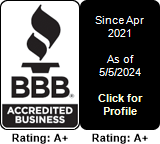Most users don’t consciously process why they click one button over another or why their attention settles on a particular section of a webpage, but web designers must. Behind every click and scroll lies a series of visual decisions shaped by how the brain responds to contrast, rhythm, and repetition. One such pattern, known as contrast echo, has become a silent driver of user flow in modern web design. It’s not just about making something stand out; it’s about creating a visual language where repeated contrast reinforces trust, orientation, and action. Understanding how contrast echo operates within interactive sequences helps designers create smoother, more intuitive experiences that lead to meaningful engagement.
What Is Contrast Echo in UX, and Why It Matters in Web Design
Contrast echo refers to the user’s tendency to subconsciously respond to repeating contrast signals, whether in color, scale, spacing, or motion, within a user interface. In modern web design, this effect shows up in the way users identify patterns, anticipate interactions, and maintain orientation within a page or sequence. For instance, when a primary button always uses a high-contrast color while secondary buttons appear muted, users begin to associate that color profile with decisive action. The echo occurs when that visual signal repeats later, reinforcing behavior. In this way, contrast echo becomes a type of visual conditioning. Without realizing it, users follow paths made visible through rhythmic contrast placement. In a design environment filled with noise and distraction, these echoes offer clarity.
Cognitive Origins of Contrast-Driven Interaction in Web Design Contexts
From a psychological perspective, contrast echo draws on visual cognition and expectation theory. Our brains are wired to seek patterns, especially those with high contrast, because contrast often signals change, importance, or opportunity. Gestalt principles such as figure-ground separation and similarity support this. In web design, contrast doesn’t just mean black on white; it can also refer to movement against stillness, spacing amid density, or lightness beside saturation. When applied in a deliberate, rhythmic way, these contrast points become navigational cues. The repetition reinforces understanding, building a subconscious map of the interface. As users encounter these echoes across multiple screens or scroll segments, they gain confidence in navigating the digital environment. They know what to expect, where to look, and what actions are likely available, all without being told.
How Interactive Sequences Use Visual Tension in Web Design Flows
Web design today often involves sequences, step-by-step flows such as onboarding, checkouts, or survey completion. Within these, contrast echo plays a unique role by maintaining momentum. Designers use contrast to create visual tension: a sense of movement or expectation that guides the user forward. Think of it like tension and release in music. A brightly colored progress bar, followed by a slightly dimmed “Next” button, followed by a pop of contrast in the confirmation step; each of these is a visual beat. Users feel the rhythm of the interface. The absence of contrast where one is expected creates hesitation, while a well-placed echo pulls the user along. Done right, this design technique makes multi-step processes feel intuitive rather than demanding.
Designing Consistent Contrast to Guide Attention Flow in Web Interfaces
Inconsistent contrast placement can sabotage even the most well-structured layouts. When designing for contrast echo, consistency is everything. A button that’s bright blue on one screen and pale gray on another teaches the user nothing. Repetition isn’t redundancy; it’s reinforcement. Web designers must establish a visual contract early: here’s what action looks like, here’s what information looks like, here’s what is inert. When those rules hold throughout the experience, users move with confidence. Attention doesn’t scatter; it flows. A simple case study: using bold, high-contrast headings to structure content. If section titles maintain the same type scale and spacing across a landing page, users immediately understand the visual hierarchy, even if they’re skimming. These are small decisions, but in a mature web design system, contrast isn’t just a visual detail; it’s a structural tool.
Color, Shape, and Motion: The Trio Behind Echo Patterns in Web Design
Contrast echo isn’t built on color alone. Shape and motion contribute equally. Rounded buttons versus sharp edges, fluid fade-ins versus snapping transitions; each of these introduces contrast language. Web design systems that leverage echo effectively create trios: color that signals importance, shape that implies function, and motion that adds rhythm. When these elements echo consistently, they form a sensory narrative. A user might not realize they’re more likely to trust a curved checkout form that mimics the earlier login layout, but the echo is doing its work. In responsive design, these signals must adapt across devices. The challenge is ensuring that mobile users, for example, still experience the echo even if the layout compresses or rearranges. Web design that accounts for this retains trust through coherence.
Real-World UI Patterns in Web Design That Leverage Contrast Echo
Many of today’s most intuitive websites subtly apply contrast echo. On Dropbox’s homepage, blue calls-to-action stand out against generous white space, a pattern echoed consistently across its ecosystem. Airbnb uses color contrast not only for primary buttons, but also to highlight listing cards and pricing modules in sequence, reinforcing value and selection cues. Shopify’s onboarding flows gradually escalate visual contrast to drive completion momentum, beginning with soft tones and ending in vivid confirmations. These aren’t just aesthetic choices; they’re strategic. They show how deliberate contrast repetition can stabilize experience, nudge interaction, and elevate design integrity.
Looking for a Web Design Partner Who Understands Macon?
Contrast echo, visual rhythm, engagement flow; they only matter if they lead somewhere. At Southern Digital Consulting, a web design company in Macon that builds with intent, we don’t just talk about principles. We build them into every pixel. If you’re ready for a website that respects your brand, serves your users, and ranks where it counts, we’re ready to build it. Let’s create something that doesn’t just look right, but works hard for your business, your market, and your future in Macon.


